Cover cropping is an important pillar in regenerative agriculture. Planting them not only protects soil from erosion and helps control weeds, but it also increases soil organic matter and some can fix Nitrogen.
What are cover crops and why plant them?
Planting cover crops can reduce soil erosion and nutrient run-off, and increase soil organic matter. They play an important role in increasing overall soil quality and productivity.
Other benefits include nitrogen fixation, weed control, increasing yield, and improving water infiltration and enhancing soil microbial activity and diversity.
The three main groups of cover crops are:
- legumes
- grasses
- broadleaves
Each group has specific functionalities to improve overall soil health. More diverse mixes of cover crops are shown to be better at improving soil health and resilience.The scope of this depends on climatic factors, cropping systems and soil type.
Legumes
Legume cover crops are largely used to convert nitrogen gas from the atmosphere to a bioavailable form in the soil (nitrogen fixation). This nitrogen will then be available to subsequent crops. The nitrogen fixation process by legume cover crops is facilitated by the rhizobia bacteria that exists in the root nodules. This bacteria converts atmospheric nitrogen (N) to ammonia (NH3), which is quickly transformed into ammonium (NH4) and then taken up by the soil organisms in the plant.
Clover, alfalfa, peas and vetches are some of the most common legume cover crops grown in Canada. This family of cover crops can be incorporated in the late fall or early spring when soil temperature is cooler. Cover crops can be interseeded with cash crops or integrated in the crop rotation systems. They can also be used in urban agriculture and in publicly owned green spaces.
Common legume cover crops include:
Clover – Trifolium

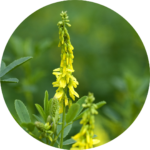


Vetch – Vicia


Field Peas – Pisum sativum

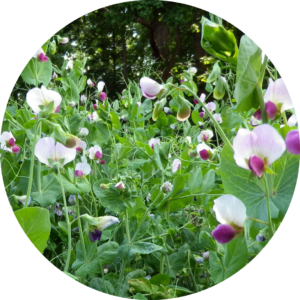
Alfalfa – Medicago sativa

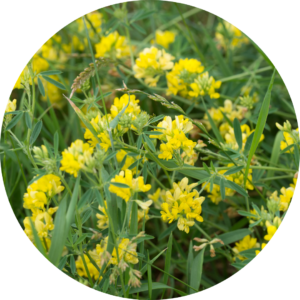
Grasses
Grass cover crops improve soil structure, enhance microbial activity and help increase yields. Grasses can be either annuals or perennials. They have fibrous root systems and are fast growing, allowing them to quickly accumulate nutrients and organic matter due to their abundant above-ground and root biomass.
While they cannot fix nitrogen from the atmosphere, grass cover crops can accumulate a large amount of N from the soil in their biomass or from manure application. The amount of nitrogen available to subsequent crops depends on the maturity phase of cover crops at the time of termination and on the Carbon to Nitrogen ratio (C:N) ratio in their biomass.
Common grass cover crops include:
Rye – Secale cereale

Winter Wheat – Triticum aestivum
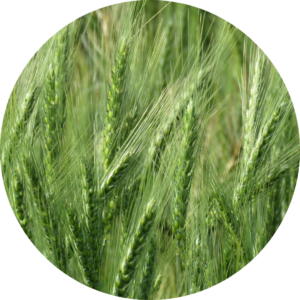
Oats – Avena sativa
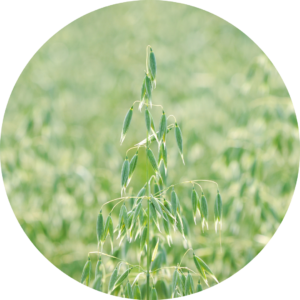
Barley – Hordeum vulgare

Sudan Grass – Sorghum x drummondii
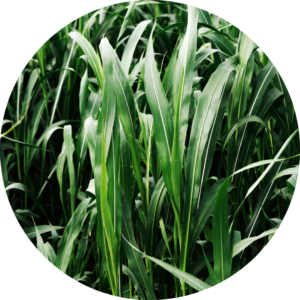
Ryegrass – Lolium

Broadleaves
Non-legume broadleaf cover crops play an important role as a catch crop, as they stabilise soil structure and capture soil nutrients and make them available to the next crops. Broadleaf cover crops grow rapidly and produce a lot of biomass. They enhance soil microbial activity and some, such as the tillage radish, are used to help mitigate mild to moderate soil compaction.
Cover crops in this family that produce taproots can reach deeper soil horizons and scavenge for nutrients while creating root channels for subsequent crops.
Mustard is a flowering cover crop that is not only useful to pollinators, but also secretes organic compounds called glucosinolates that help control soil pests and diseases.
In Canada, common broadleaf cover crops are:
Forage radish – Raphanus sativus

Buckwheat – Fagopyrum esculentum
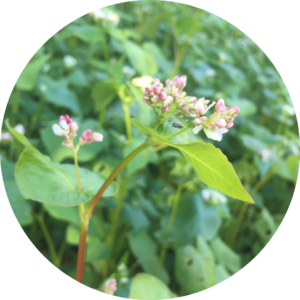
Sunflower – Helianthus

Phacelia
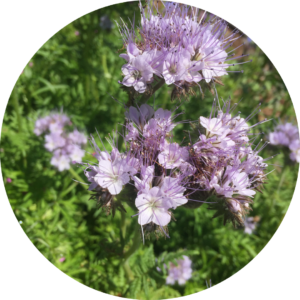
Mustard

Further resources:
Ontario Ministry of Agriculture, Food and Rural Affairs (OMAFRA) – Cover Crops
Ministère de l’Agriculture, des Pêcheries et de l’Alimentation (MAPAQ) – Cultures de couverture en production de grandes cultures
Innovation in Cover Crops – Cover Crop Decision tool
Soil Health Institute – Best Practices
New Brunswick of Canada – Cover Crops
Sustainable Agriculture, Research and Education (SARE) – Managing Cover Crops Profitability
Food and Agriculture Organization (FAO) – Green manure/cover crops and crop rotation in Conservation Agriculture on small farms




